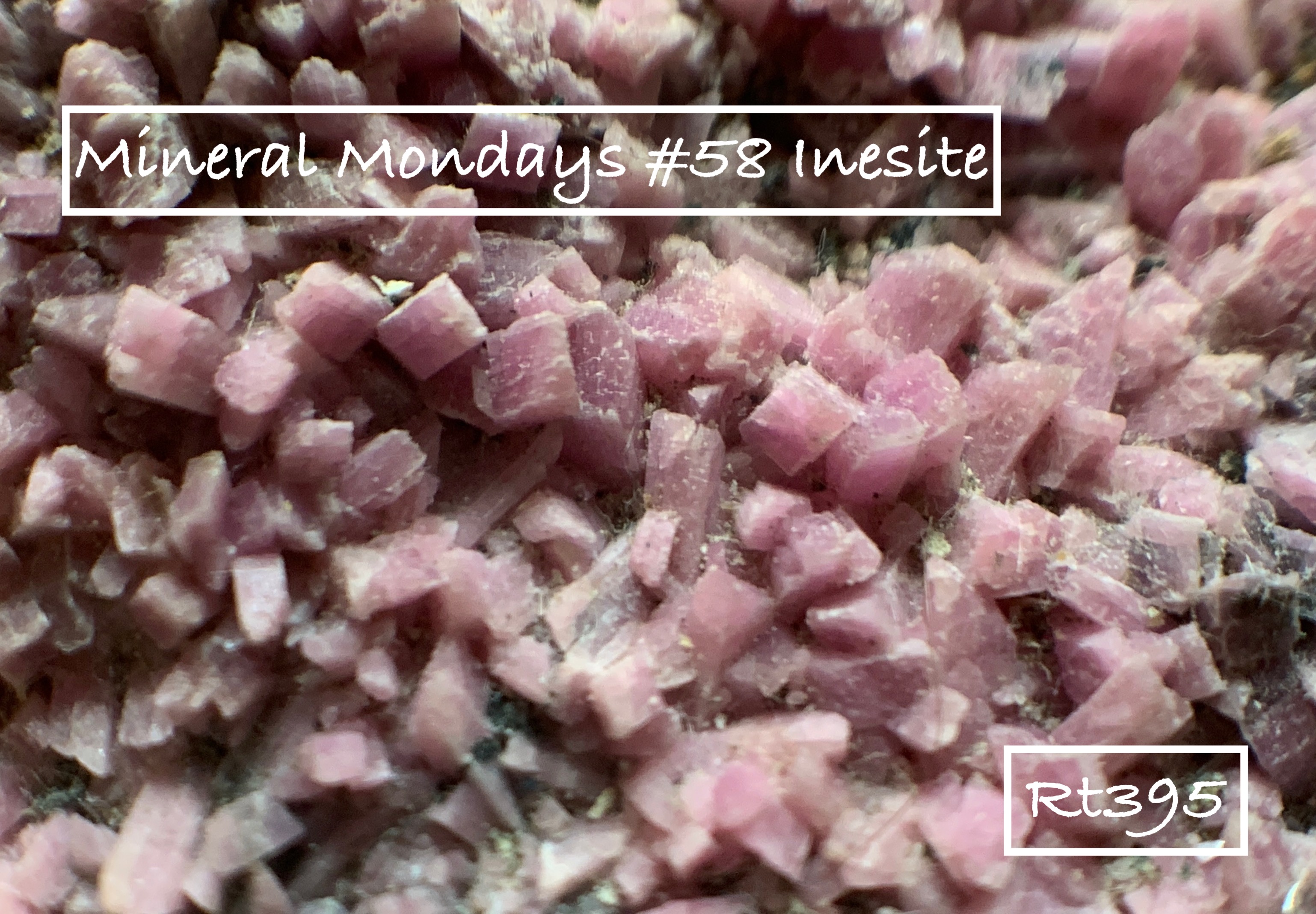Mineral Mondays #58 Inesite

Inesite is a little known calcium magnesium mineral. I'm going to guess anyone reading this article has never heard of it. While unknown outside of the mineral world, it is fairly sought after inside the mineral world. It is a pretty mineral though because it's pink!
.jpg)
Inesite comes in several colors including pink, red, orange, brown and/or a combination of those. The chemical formula is Ca2Mn7Si10O28(OH)2•5(H2O), a calcium, magnesium, silicate. It forms in the triclinic system, the odd sibling of the 6 other crystal systems.
It forms when hydrothermal deposits fill in cracks of magnesium bearing rock or serpentine.
I recently had a chance to pick up several large specimens at the Fallbrook Gem & Mineral show. Fallbrook is it is a legendary club because of the nearby Pala mining district famous for tourmaline & beryl. Those deposits & one of the world's most famous collectors, Fallbrook resident, Bill Larson, helped build the club pull in minerals from all over the world. Every year the club holds the show for members to sell.
.jpg)
This year an old collector had passed away and so literal tons of his rocks went on sale. One portion of his collection were these inesite specimens. I bought a whole 5 gallon bucket full for dirt cheap and I've been slowly going through them, cleaning, trimming and deciding what to keep and what to sell.
.jpg)
Often times the inesite will come encased in calcite. If you look at the picture above, the white material is left over calcite. The calcite completely covered the inesite and was etched away with acid to reveal the pink crystals inside. I didn't do the etching, the old owner did. I may need to do some though in order to get a few of the specimens my eye appealing.

The specimens I acquired are from a mine in Northern California called the Hale Creek Mine. It is a world famous inesite locality that most collectors will have a specimen from in their collection.
.jpg)
In addition to inesite, the Hale Creek Mine also produces rhodochrosite which is similar in appearance and shape to inesite, but more more valuable.

Other inesite localities include Japan, China and South Africa.

The larger crystals in the picture above measure over 1 inch long. Very rare for the species.
.jpg)
Tomorrow I am going to talk about how to identify those pretty rocks you find. Pink is often a magnesium bearing mineral. So there's a head start. Until tomorrow, thanks for reading!

Any meteorite?! I have seen so many fake ones in Chinatown!! Too cheap to be the real things!
No, I haven't gotten into meteorites yet. The mineral world is pretty wide and deep and each species can involve quite a bit of your time.
As far as the fakes, ya there are a lot out there. From what I understand one sure fire way to tell a real meteorite is the scarring on the exterior from atmosphere entry. Other than that any iron/nickel/olivine stone could be passed off as a meteorite.
calcium magnesium mineral is something I dont know about.. You nicely explain it.
Thanks. Even for me it's a constant learning experience since there are over 5,000 minerals and the list grows annually. Some of my friends have recently discovered their own minerals and named them, like Alwilkinsite or Houselyite. It's such a fascinating world.
Your content has been voted as a part of Encouragement program. Keep up the good work!
Use Ecency daily to boost your growth on platform!
Support Ecency
Vote for Proposal
Delegate HP and earn more